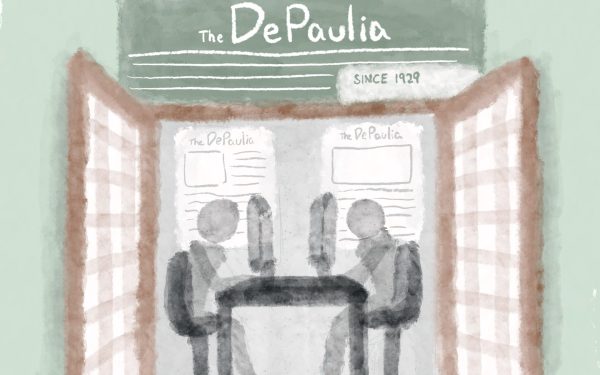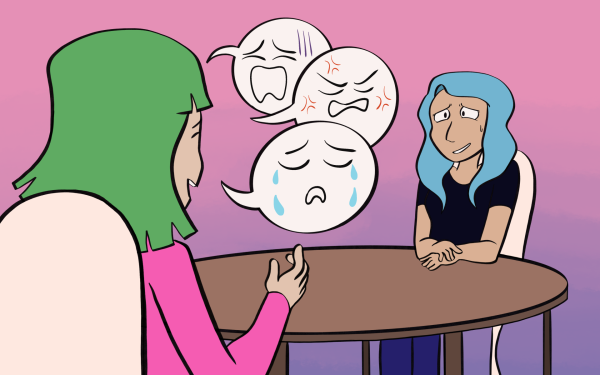Opinion: The Not So-Supreme Court
The sun rises behind the Supreme Court in Washington, Wednesday, Sept. 23, 2020.
If you have ever put the Supreme Court on a pedestal, this is a good week to stop doing that.
In the past few weeks, between what Governor Pritzker labeled our “American tradition” of mass shooting, and the reversal of a right recognized five decades ago, we shouldn’t tip toe around what the Court is. The Court has always been a political branch, influenced by political whims, reforms, and movements for change.
The conservative legal movement has spent decades capturing the least democratic branch of federal government to enforce upon the American people incredibly unpopular wills, including overturning Roe, which public opinion shows a near 60% disapproval rate.
In law school, you learn about methods of interpretation and legal reasoning. In practice, you can make all the arguments in the world about precedent or reliance, impact, or history, and at the end of the day – when justices put on a robe, they don’t lose their biases or political ideology.
In an attempt to declare racism over, the Court gutted the Voting Rights Act, a bill that had been signed into law and reaffirmed with bipartisan support consistently. When it got a conservative supermajority hell-bent on overturning Roe and Casey despite decades of precedent and reliance on it, they did. As the Strict Scrutiny hosts put it, the Supreme Court is rolling on “no laws, just vibes.”
There is no linear version of history where the Supreme Court was only following the “law” and then switched to politics. In truth, the Supreme Court has largely been a reactionary institution that gave itself the power to decide law and shape society, all while pretending it was acting above politics.
The disastrous Dred Scott decision laid groundwork for a civil war, and the Civil Rights Cases in 1883 laid groundwork for Jim Crow. Of course, it took political actors, to perpetuate and then reform the American apartheid state, but the Court played an important role in making society less equal, fair or democratic.
American history is full of promises made and not kept, of a country not living up to the words of the Constitution itself. Yet, most moments of profound change were led by “We the People,” not people dressed in robes. Even after Brown was decided, it took more civil rights organizing on the ground and federal action by Congress to make real the promise of desegregation — something still not fully realized today. That is why any answer to the Court’s reactionary turn must involve more democracy, not less.
This interpretative framework is inherently reactionary and attempts to take the country back a few hundred years.
The wonderful thing about liberty is that when one makes real the promise of the word, it can actually mean something quite beautiful and expansive. However, when you apply the narrowest definition of the word, relying solely on historical practices from an era where only white land-owning men could vote, you are deciding whose perspective to accept. This interpretative framework is inherently reactionary and attempts to take the country back a few hundred years. After decades of jurisprudence expanding liberty to advance women’s rights, privacy in the bedroom, defendant rights, civil rights, and marriage equality – this radical court is headed back in time.
Legal interpretation requires giving meaning to the Equal Protection Clause and liberty, rather than relying on what was accepted in the 18th Century, a time where Black people were considered property and white women’s legal rights were minimal at best.
While public opinion is clearly not on the current Court’s side, I want to be clear – public opinion is not everything. There are plenty of times where a court must protect an unpopular opinion. For example, Loving was not popular at the time — approval of interracial marriage a year after the decision was only at 20% according to Gallup. Clearly, the Court was correct to apply the words of the Constitution and Equal Protection under the law to strike down bans on interracial marriage despite the unpopular support. It’s worth noting that decision was the furthest from being “originalist.”
Restricting abortion, which forces involuntary labor, is not only unpopular and harmful, but invokes a retraction of rights, following an incredibly narrow view of what liberty means. In fact, it marks the first time the Supreme Court took away an accepted right — one that has enabled millions of women, and people in general, to plan their life and socioeconomic status.
While it is possible we will enter a new movement for real change, the Court is insulated and dominated by a super majority of conservative ideologies sent on a mission to overturn Roe. That is why the democratic response to this out-of-control court requires structural change. In other words, more – not less democracy.
As a result, law students must think critically of the role they can play alongside organizers, activists, elected officials, and neighbors to build long standing civic power.
However, in addition to a narrow view of liberty, this Court has co-signed on a limited vision of democracy. A vision where states can gerrymander your vote into near nonexistence, chip away at representational progress in district drawing, and allow for corporate dark money to flood your Facebook feed with garbage.
This is why we must think big. We need to advance structural democratic reform to make voting easier, to allow for change in the Senate without an artifact of the civil rights resistance holding up common sense bills. We need to make each appointment to the Supreme Court feel less life and death. Perhaps this means a rotating panel of justices on the court, or term limits for justices, an idea the majority of Americans support.
While we are at it, courts should interpret laws signed by presidents chosen by popular vote, or if we are to keep the electoral college, at least ensure representation for every American – whether you happen to live in DC or in Puerto Rico. Democracy must be big enough for all of us or it will continue to falter.
If this is reading like a pipe dream now, that is because our systems have been so broken that many of us feel there is no hope of fixing them. Yet, we must continue to make arguments, organize, and advocate around these improvements. States like Illinois can lead the way on environmental justice and abortion rights, but it’s clear federal action is required. You can’t address climate change while also gutting the ability of the Environmental Protection Agency to regulate the very things causing it. A right in Illinois but not in our neighboring states is not much of a right at all.
If there was ever a time to get real about the Court and start acting on democratic reform – well, we are well past that time, but there are plenty of worthy ideas floating around in need of discussion and debate. In the meantime, I will try to get back to studying.















Chris Beiderbecke • Jul 18, 2022 at 3:14 pm
Outstanding piece. I’d only note that in their recent decisions, the SCOTUS has not only relied on an absolutist originalist view of what was laid down in the 18th century, but goes back to the 13th. While mocking Roe for it’s discussion of abortion in antiquity, Samuel Alito in his scathing attack on Roe and Casey, actually cites Henry de Bracton’s writings, written in the 1250’s, writings that also included things such as “… monsters, duels, bastardy, concubines, sturgeon “and other royal fish,” the “pillory and the ducking-stool,” and “a judgment with infamy.”
He also cites a legal figure from 1673, Sir Matthew Hale, who also had at least two women executed for witchcraft and wrote a treatise supporting marital rape.
The entire opinion is ludicrous, as is the hypocrisy in throwing Roe back to the states, while denying the state of New York the right to require applicants to show need when they apply for concealed carry permits. Talk about the right wing boogy-man of “judicial activism”.